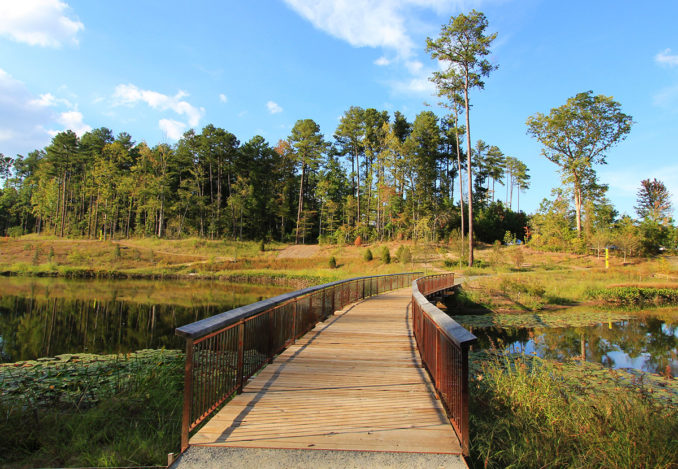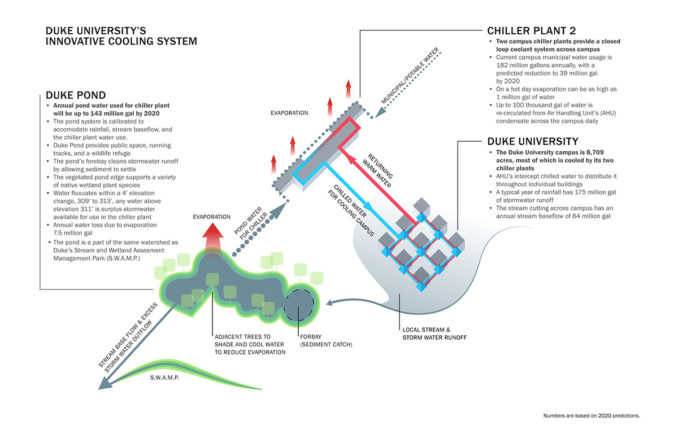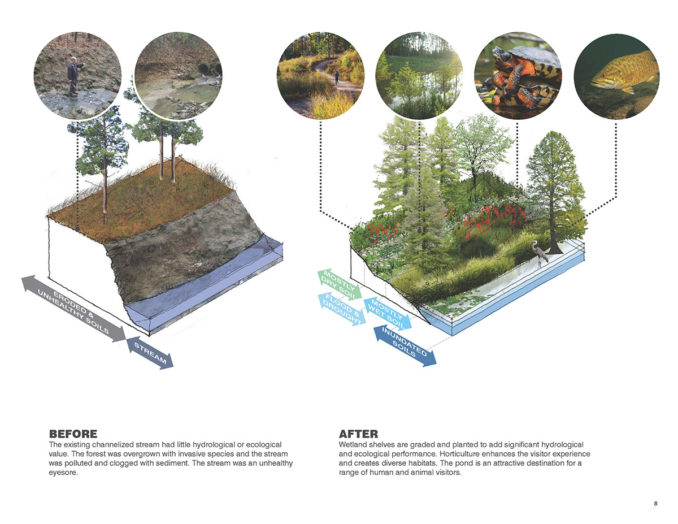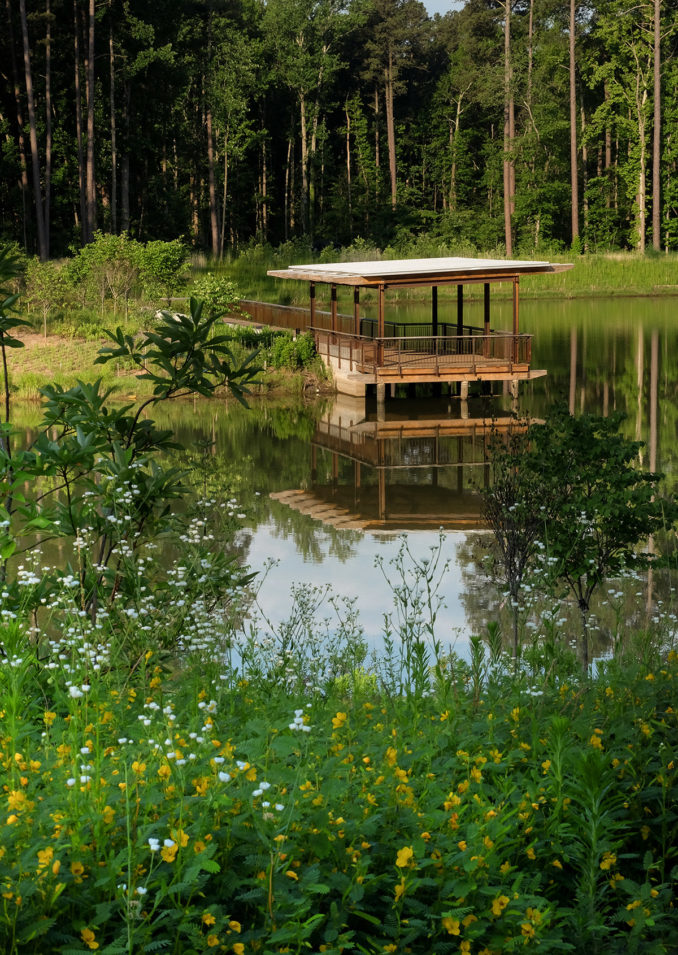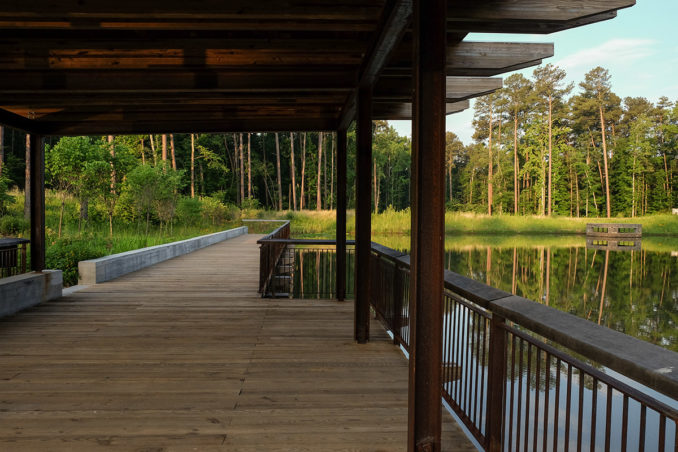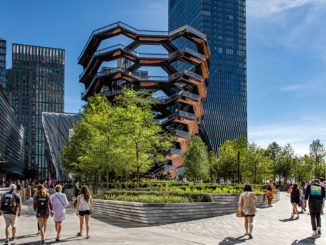In 2008 Durham North Carolina experienced record drought, resulting in a city-wide mandate to reduce potable water consumption. Recognizing the city’s challenge, Duke University sought to reduce the intake of their chiller system, which at that point was using approximately 140 million gallons each year for providing air conditioning for buildings on campus. An engineering team proposed a retaining pond to collect runoff from the campus and NBW was brought on board to evolve this project beyond strict infrastructure to manifest the ecological, educational, and recreational potential of the site.
“It was a question of how to turn infrastructure into place-making. Then it was about smart engineering and smart design – and how they can work together.” Mark Hough, Duke University’s resident landscape architect.
The project area spans twelve acres, about half of which are occupied by the retention pond with between eight and twelve feet of water depending on rainfall. When the Olmsted brothers designed the campus master plan in the 1920s, they intended to install a lake within proximity of this site, but at the time it was ruled out due to financial constraints. This project brings to completion their vision nearly a century in the making.
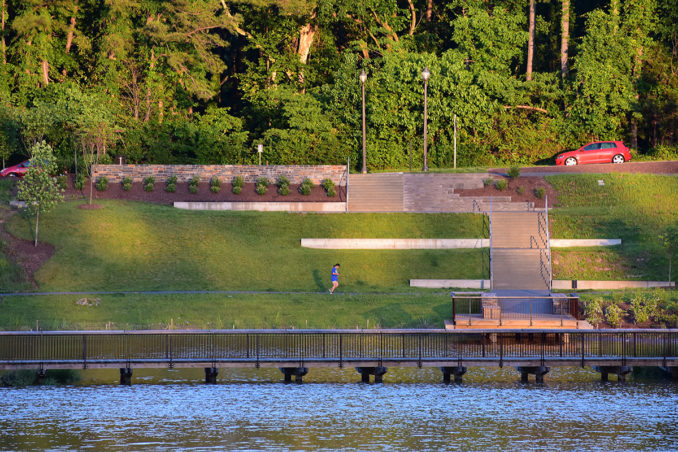
The pond is placed along the route of Sandy Creek, allowing it to regulate water levels as needed through inflow and outflow and giving the pond the unique opportunity to improve stormwater quality as it passes through. A forebay allows sediment to settle while a multitude of wetland plants filter out phosphorus before the water travels to the threatened river system downstream.
Prior to the pond development, the sloped stream banks were overgrown with invasives and erosion allowed sediment to run off into the stream. The new pond utilizes wetland shelves, structured by Bald Cyprus Taxodium distichum, to provide distinct tiers of growth that provide visual interest while contributing to the ecological performance of the small lake.
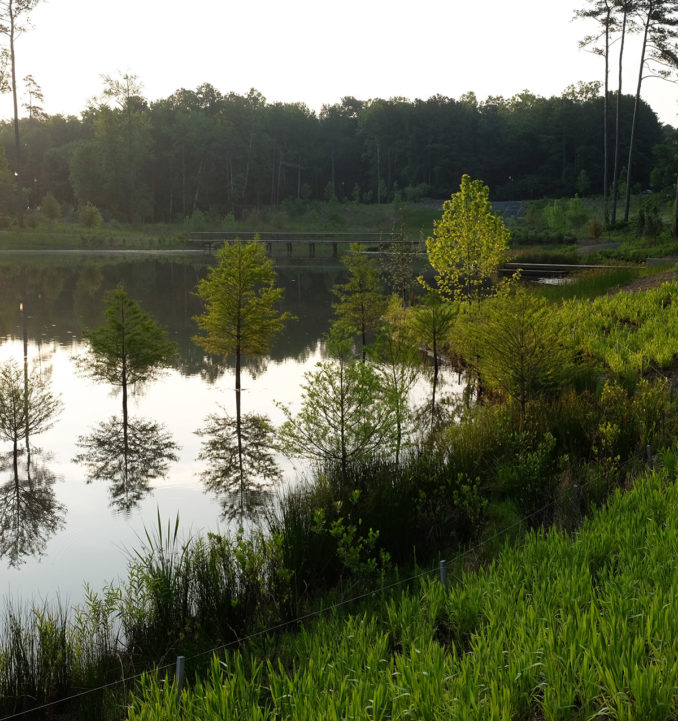
Altogether around95,000 wetland plants and 2,500 trees were installed across the site, creating a thriving and diverse habitat for wildlife and pollinators. The plants span emergent, wetland, and upland growing conditions, and are tolerant to seasonal fluctuations in water level.
The pond also serves as an immersive educational resource, as explained by NBW’s Evan Grimm; “We worked with the Nicholson School of Environment professors to develop plantings that are entirely native species, so it can be used as an outdoor classroom.”
Construction began in April 2013 and took two years to fully complete. Throughout the design and implementation process, special care was taken to ensure minimal disruption to the area and to use materials in ways that reflected the ethos of the project. Trees were preserved through careful grading of the site or utilized as lumber in the construction; the stone was sourced from the University’s own quarry.
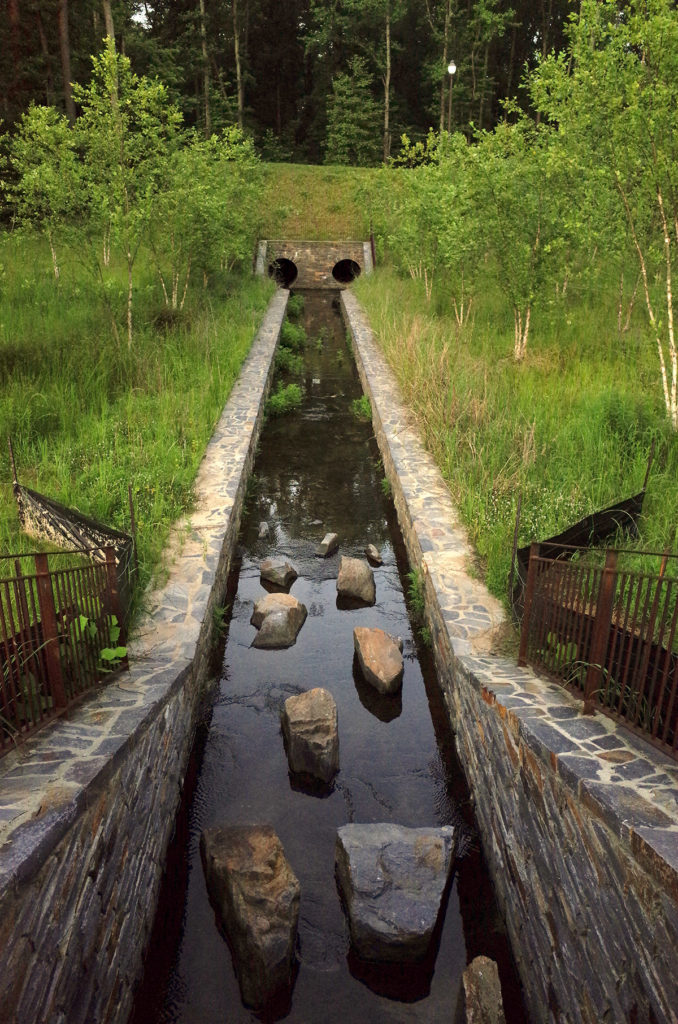
A series of paths provide easy access for the University and the greater Durham community while the design provides an array of active and passive engagement opportunities from small gatherings in the amphitheater to quiet study areas. The restored habitat also allows students and faculty to monitor the functionality and conduct onsite research projects.
The resulting design balances natural and cultural elements while reducing the University’s annual use of potable city water by roughly 200 million gallons all while significantly enriching the campus with a beautiful and engaging civic space.
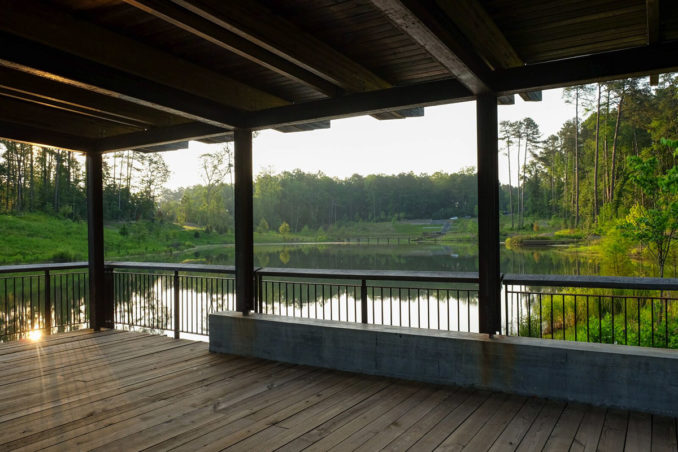
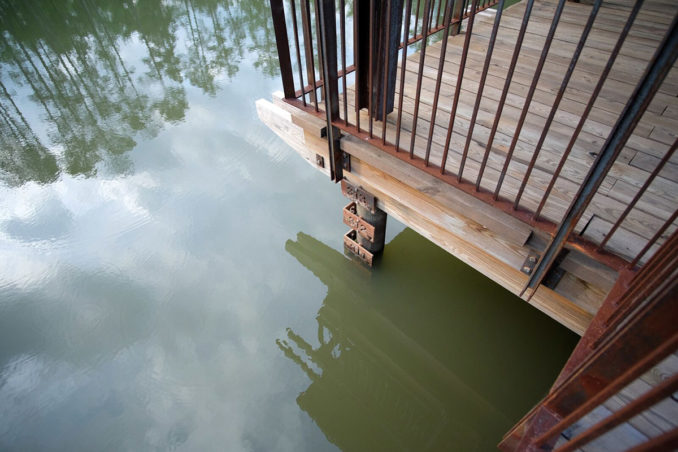
Duke Pond – Duke University
Landscape Architect | Nelson Byrd Woltz Landscape Architects
Design Team
Principal in Charge – Warren Byrd
Principal – Thomas Woltz
Project Manager – Evan Grimm
Senior Associates – Evan Grimm, Kennon Williams
Designers – Tom Hogge, Adalie Pierce-McManamon
Researcher – Alissa Diamond
Consultants
Civil Engineers – McAdams Civil Engineers
Architects – MEP
Contractors – LeChase, Ruppert Landscape
Client
Duke University
University Landscape Architect Mark Hough
Duke Facilities Management
Location | Durham, North Carolina, USA

